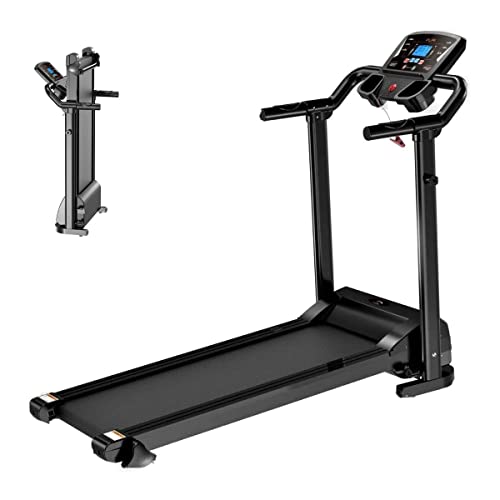The Walking Machine: A Comprehensive Guide to Your Fitness CompanionIn today’s fast-paced world, where time is a high-end, keeping a consistent exercise regimen can be a difficulty. For many, a walking machine– commonly understood as a treadmill– functions as a perfect physical fitness buddy. This short article offers a thorough take a look at walking machines, including their benefits, types, maintenance suggestions, and often asked concerns. Why Choose a Walking Machine?Walking machines use a useful and efficient way to include cardiovascular exercise into everyday life. Here are numerous key benefits:
Why Choose a Walking Machine?Walking machines use a useful and efficient way to include cardiovascular exercise into everyday life. Here are numerous key benefits:
- Convenience: Walking machines allow individuals to exercise anytime, regardless of climate condition or time restrictions. They are perfect for hectic schedules.
- Versatility: Users can walk, jog, or run at their own pace and intensity.
- Safety: Walking machines provide a lower danger of injury compared to outdoor walking or running, specifically for newbies or those recovering from injuries.
- Tracking Progress: Many treadmills included built-in screens that track metrics like speed, distance, and calories burned.
Kinds Of Walking MachinesWhen thinking about a walking machine, it’s necessary to pick the best treadmills type based on individual physical fitness goals and space constraints. Below are the main types of walking machines:TypeDescriptionHandbook TreadmillsThese machines do not have a motor, and users require to walk or run to rotate the belt.Electric home treadmills ukPowered by an electric motor, permitting users to set the speed and slope easily.Folding TreadmillsCreated for easy storage, these discount treadmills can be folded up when not in use.Desk TreadmillsSuitable for a double work and exercise environment, these compact machines permit walking while working.Incline TrainersThese allow users to imitate uphill walking, boosting workout intensity and calorie burn.Selecting the Right Walking MachineSelecting the right walking machine can considerably impact inspiration and efficiency. Here are some factors to think about:Key Features to Look For
- Motor Power: An effective motor ensures a smooth and consistent exercise. For periodic walkers, a 1.5 HP motor is usually sufficient; for heavier use, search for 3.0 HP and above.
- Belt Size: A broader and longer belt provides more area for a comfortable stride. Requirement sizes range from 16 inches wide and 50 inches long.
- Incline Options: Adjustable incline settings can simulate walking or running uphill, increasing the intensity of the exercise.
- Shock Absorption: Good shock absorption lowers the threat of joint injuries and improves comfort.
- Console Features: Look for built-in workouts, heart rate screens, and connectivity functions like Bluetooth for a more engaging experience.
Spending plan ConsiderationsWalking machines been available in a large range of costs, depending upon features and construction quality. Here’s a rough budget breakdown:Price RangeFeaturesUnder ₤ 300Standard handbook or small electric treadmills with limited functions.₤ 300 – ₤ 700Advanced electric treadmills with slope, medium power motors, and much better guarantees.₤ 700 – ₤ 1500High-quality electric treadmills with bigger integrated screens, substantial features, and service warranties.₤ 1500 and aboveHigh-end models offering innovative technology, functions, and resilient construction for major physical fitness enthusiasts.Maintenance Tips for Your Walking MachineTo ensure longevity and optimal performance of a walking machine, consider the following upkeep tips:
- Regular Cleaning: Dust and sweat can collect on the machine and the belt. Wipe down the surface areas and tidy the belt regularly.
- Lubrication: Depending on the design, oiling the running belt occasionally can avoid wear and tear. Inspect the maker standards for advised lubrication schedules.
- Examination: Periodically examine the machine for loose screws or used parts. Tighten and replace as required.
- Calibration: Occasionally, check the calibration of your machine’s metrics to guarantee they offer precise data.
- Correct Use: Follow the producer’s suggestions for weight limits and functional standards.
FAQs About Walking Machines1. Are walking machines a good exercise?Yes, walking machines provide an outstanding cardiovascular exercise, can aid with weight reduction, and improve total health.2. How typically should I utilize a walking machine?Go for at least 150 minutes of moderate-intensity aerobic activity each week, which can quickly be achieved with routine sessions on a walking machine.3. Can I reduce weight on a walking machine?Yes, including a walking machine regimen into a healthy diet plan can promote weight reduction, specifically if combined with intervals and incline training.4. Is it safe for elders to use a walking machine?Yes, walking machines can be safe for seniors with low-impact settings and safety functions like handrails. Nevertheless, individuals should seek advice from their healthcare service provider before beginning any exercise program.5. What’s the distinction between a treadmill and a walking machine?The term “walking machine” usually describes a treadmill meant for walking, while “treadmill” can describe machines utilized for various strengths, consisting of running.With their adaptability and convenience, walking machines can considerably enhance one’s physical fitness journey. By carefully selecting the Best At Home Treadmill type, making sure appropriate upkeep, and integrating various exercise methods, users can maximize their walking machine’s advantages. Just like any exercise program, consistency is key to attaining enduring physical fitness outcomes.